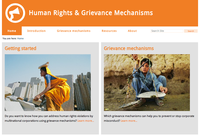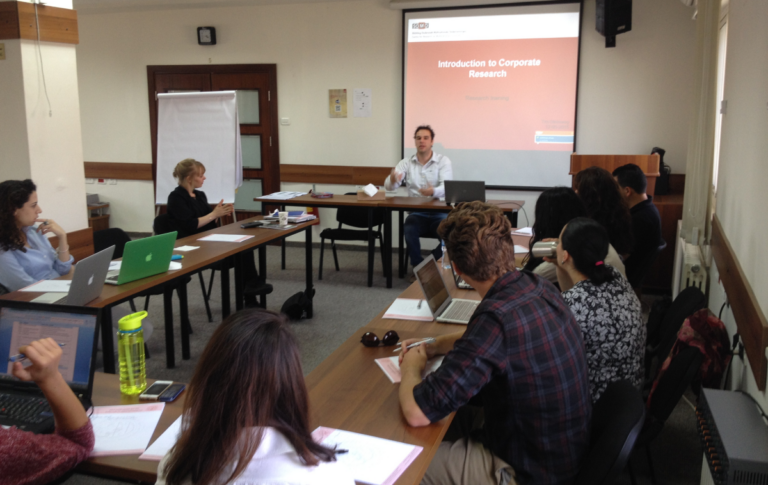
Human rights programme bolsters grievance mechanisms
The local employees of international companies in developing countries often do not know where to seek help if they are fired on the spot, or subject to structurally unpaid overwork and other such labour abuses. Similarly, rural communities whose livelihood is threatened, by large scale building plans of an international mining corporation for example, don’t know where to go with their grievances. SOMO’s four-year programme Human Rights and Grievance Mechanisms (HRGM) aims to increase the accessibility as well as the effectiveness of grievance mechanisms*.
Multinationals have increased their presence and activities in southern countries considerably. Their growing influence puts national sovereignty in a country under pressure. When governments do not deal with the human rights abuses committed by multinationals, civil society needs to be able to act with more impact. Legal proceedings are often lengthy, expensive and sometimes unreliable. Good non-judicial grievance mechanisms are important supplementary instruments to help victims get reparation.
The HRGM programme(opens in new window) is working on reinforcing these instruments. SOMO is cooperating with southern partners on capacity building and support of grievance mechanisms. Last November in the Netherlands, representatives from these southern partners received training regarding the operation and strategic use of grievance mechanisms. A large part of the three-day training was reserved to teach the participants how to train their partner organisations, ‘community-based organisations’ and individual employees.
In 2013 the southern partners will be providing their own trainings to NGOs in Africa, Asia and Latin America.These training courses should lead to NGOs and employees being more familiar with the existence and workings of grievance mechanisms. The HRGM programme, through expert meetings with local lawyers and experts, also provides improved protection to human rights activists if they actually take steps to submit complaints.
Joris Oldenziel: “The important thing is to enable victims of human rights abuses by corporations to make use of effective grievance mechanisms, without the danger of reprisals or legal steps by the company.”
SOMO is testing existing grievance mechanisms, such as the National Contact Points (NCPs) of the Organisation for Economic Cooperation and Development (OECD). This programme not only examines these types of interstate grievance mechanisms critically in terms of their effectiveness, but also those of financial institutes such as the World Bank Inspection Panel and of sector initiatives. An example of the latter is the Fair Wear Foundation, located in the Netherlands. Additionally, the programme studies company-level grievance mechanisms.
“In the electronics sector, SOMO has been carrying out research into the accessibility of company-level grievance mechanisms and it becomes apparent that these do not work, or only work minimally.”
This leaves employees with no options for addressing problems such as poor working conditions in a factory, and without prospect of improvement.
Finally, based on this knowledge creating research, recommendations are given to improve the grievance mechanisms in such a way that companies do experience consequences when grievance committees rule that a complaint is well-founded.
In 2012 SOMO will be developing a website for NGOs, communities and other parties interested in advice and information about grievance mechanisms.
* Grievance mechanism: is a non-judicial procedure that offers a formalised means through which individuals or groups can raise concerns about the impact an enterprise has on them – including, but not exclusively, on their human rights – and can seek remedy.
Related content
-
-
-
Human Rights and Grievance Mechanisms Published on:J. OldenzielPosted in category:PublicationJ. Oldenziel
-
 Successful start to training on non-judicial grievance mechanismsPosted in category:NewsPublished on:
Successful start to training on non-judicial grievance mechanismsPosted in category:NewsPublished on: -
Using Grievance Mechanisms Published on:
 Esther de HaanPosted in category:Publication
Esther de HaanPosted in category:Publication Esther de Haan
Esther de Haan
-


